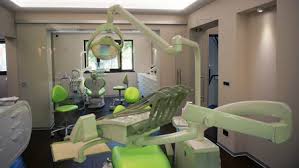Dental veneers.
White and beautiful teeth are everyone’s dream, and many of us are worried about the gaps between the teeth, a cracked tooth, or a false tooth that doesn’t want to whiten; a very popular cosmetic treatment to repair and reshape teeth and make them brighter are dental veneers.
Many aesthetic issues can be correct and improved with this procedure, and differences between before and after are clear.
Veneers teeth. The use.
Dental veneers are thin shells of tooth-colored material, thin layers that are placed on the front surface of the teeth, to change their shape, colour or length; dental veneers are crafted and customized for each patient, to achieve a result as natural as possible. Dental veneers must follow the gums line and guarantee the functionality of the teeth.
Porcelain veneers before and after.
Dental veneers are usually made up of porcelain or composite resin: the choice of the material depends on the needs and the characteristics of the patient, but developing dental technology has made veneers more durable and convenient than before. Digital imaging systems or cosmetic imaging enable dentists to create same-day restorations or diagnostic mock-up that allow the patient to ‘try on’ veneers to see how the final result could look.
It’s important to have specific cosmetic goals, as well as realistic expectations.
Usually, dental veneers are used in cases of tooth discoloration, cracked or chipped teeth, uneven or misaligned teeth, or teeth that have gaps among them, teeth worn down; sometimes veneers are combined with teeth whitening treatments or dental crown.
Before patients decide that dental veneers are the solution to their problems, they have to know that this treatment is not reversible because a thin layer of enamel must be removed to create a room for the veneers; besides, not everyone is a good candidate to receive dental veneers.
Patients should have healthy teeth and gums, a proper oral hygiene, a sufficient amount of healthy enamel, as dentists remove a thin layer of it; patients with tooth decay, gum disease, root canal infection or grinding teeth could be poor candidates for veneers.
After dental veneers are placed, sensitivity to hot and cold temperatures could be experienced, due to the removal of the enamel; veneers are brittle, so it is better to avoid excessive stresses and don’t bite fingernails, ice, or use teeth as tools: veneers can dislodge, chip or crack. Moreover, teeth with veneers can still experience decay.
Veneers before and after.
To maintain dental veneers, oral care is the same as before, with brushing and flossing; after veneers are placed it is crucial to return to the dentist, for a follow-up visit and for the professional maintenance, that means long-lasting and beautiful veneers.





